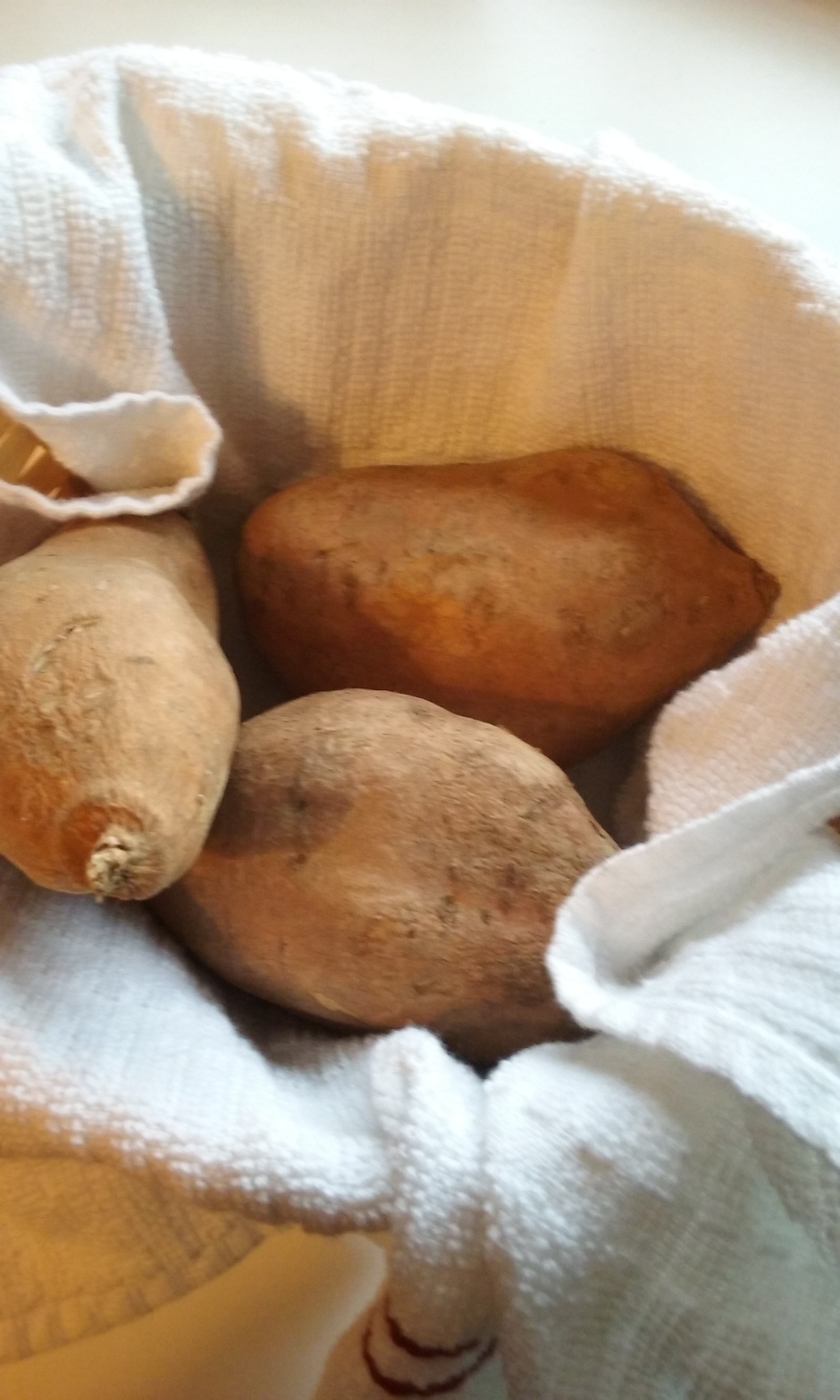I recently talked about two of my new year goals, Organize and Getting Back to Eating Healthy. If I’m more organized in the way I do things and store things, it will make eating healthy that much easier. So I’m organizing what bit of space I have in my ‘kitchen’. (Remember, I rent a room.) A few of the things I want to do this year:
- Bring in a drawer/cupboard unit, three high. This will take up only about the same space lengthwise and depth-wise as the old two-tier shelf that I’m using, will provide two long drawers for plates, bowls, utensils, etc., and two cupboards for the slow cookers, personal blender, and hand mixer. The toaster oven will still fit on top, and I’ll gain overall space for these items. ADDED BONUS: Everything will be hidden from view, making the area look better.
- Bring in a cabinet for food storage. I wanted to have the pantry in the closet, but it isn’t really going to work for me. I need the closet for storage, at least for a while. After I’m done going through and organizing the rest of the things I need to bring to my room, I’ll maybe be able to make the closet pantry work. This cabinet can not be very deep, because of where it needs to stand, but it should work just fine.
- Buy a new dorm size fridge; one that has the freezer door separate from the refrigerator door. The freezer in the existing ancient dorm fridge does not work well, and is too small. With a new, slightly bigger freezer, I’ll be able to do more, batch cooking of healthy foods (in small increments), freeze smoothie packs, and/or buy meats and other things on sale and freeze for later. It’s not as much space as I’d like, but will work better for me than the current one.
Eating healthy is so important, and I’m trying to learn the most frugal ways to pull this off to share with you. I feel so much better and have far more energy when I’m eating healthy. It’s well worth a little extra expense; I just can’t go overboard with those expenses.
I was recently inspired by Leesa mattress to share my tips on being healthy in this new year. I’ve never used one of their mattresses, but they do look comfortable. They are challenging everyone to maintain an active, healthy lifestyle outside the gym and kitchen this year. I thought about it and decided I’d love to do that for you.
There is more to being healthy than preparing and eating healthy foods.
Nutrition is only part of being healthy. I want myself and my readers to be healthy in a more well-rounded way, so I thought this article and graphic would be great for the blog. Are you a morning person?
I’m extending my healthy behaviors to encompass all the parts of my life.
(Keep in mind that I work mainly evenings, and one double per week starting early morning and ending late night. These routines are done on the evenings/mornings/days I’m actually at home and not at work. All we can do is our best.)
Evening Routine:
- I’ll be making a short to-do-list for the following day, so I can make sure I’m getting the most important things done. (This will be new for me.)
- I’ll be having a Mini At-Home Spa Moment. (While I’ve done this on occasion, I’ll be making it a habit this year.)
- I already enjoy a cup of chamomile tea while relaxing with a movie or a book in the evening.
- Go to bed when I’m tired. If I try to go to bed any earlier, my mind goes into overdrive and I’m up most of the night thinking. Am I the only one?
Morning Routine:
- I wake up naturally; and this has helped a great deal with how I feel throughout the day.
- I make sure to drink a glass of room temperature, filtered water, with a squeeze of real lemon.
- I do a routine of yoga, meditation, and stretching.
- I journal, then flip through a magazine or do a little reading.
- I will also be concentrating on the spiritual aspect of my life. (This will be new for me.)
Daily:
- I practice the art of positive thinking.
- I’m also learning how not to be so hard on myself. (This will be new for me.)
Throughout the Week:
- I walk. At least three times a week this time of year, but almost daily during good weather.
- Right now I’m doing a plank/squat/hand weight challenge. I’ll maybe find another challenge when I’m done with this one.
Throughout the Year:
- I’m trying really hard to allow myself to take breaks. A few minutes here, a day there. A weekend once in a while. A personal retreat does wonders, and it is so important to get out and do things. I call these mental health days.
- I try to get at least two partial vacations in a year. I visit my daughters, one per vacation. My favorite times are with my daughters and my grandson. As a matter-of-fact, I’ll be visiting with Skye in Fort Kent next month. I’m taking six days off from work. In a row. I am so proud of myself!
As you can see, I’m incorporating a lot of healthy habits into my routine, and keeping many old ones. Nutritional, physical, and mental health are all so important, and they work together to keep a person healthy and motivated.
What healthy routines do you have?
Shannon











